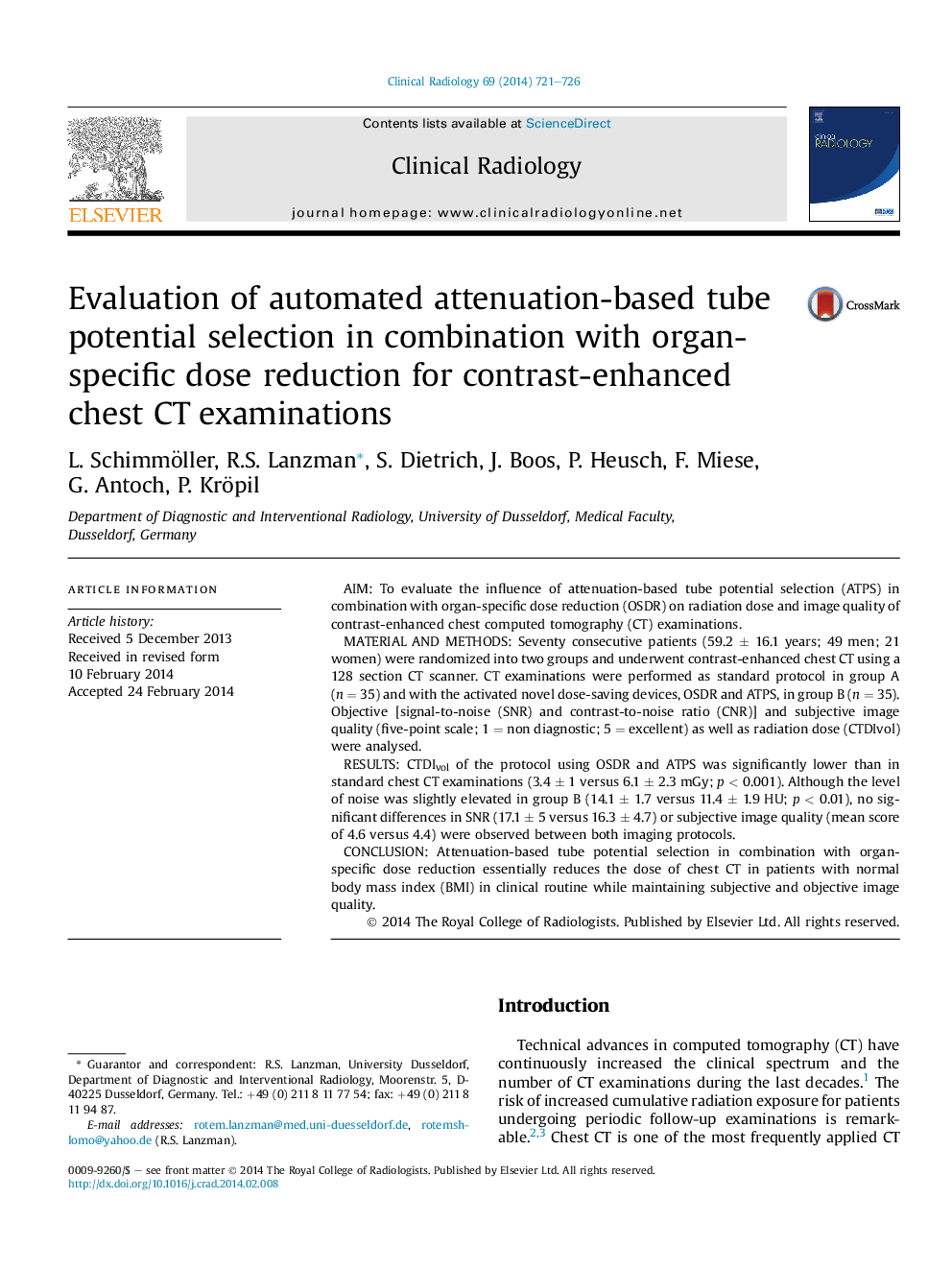| Article ID | Journal | Published Year | Pages | File Type |
|---|---|---|---|---|
| 3981928 | Clinical Radiology | 2014 | 6 Pages |
•ATPS in combination with OSDR essentially reduces radiation exposure in chest CT.•ATPS combined with OSDR does not compromise image quality of chest CT examinations.•ATPS and OSDR can be recommended for clinical routine.
AimTo evaluate the influence of attenuation-based tube potential selection (ATPS) in combination with organ-specific dose reduction (OSDR) on radiation dose and image quality of contrast-enhanced chest computed tomography (CT) examinations.Material and methodsSeventy consecutive patients (59.2 ± 16.1 years; 49 men; 21 women) were randomized into two groups and underwent contrast-enhanced chest CT using a 128 section CT scanner. CT examinations were performed as standard protocol in group A (n = 35) and with the activated novel dose-saving devices, OSDR and ATPS, in group B (n = 35). Objective [signal-to-noise (SNR) and contrast-to-noise ratio (CNR)] and subjective image quality (five-point scale; 1 = non diagnostic; 5 = excellent) as well as radiation dose (CTDIvol) were analysed.ResultsCTDIvol of the protocol using OSDR and ATPS was significantly lower than in standard chest CT examinations (3.4 ± 1 versus 6.1 ± 2.3 mGy; p < 0.001). Although the level of noise was slightly elevated in group B (14.1 ± 1.7 versus 11.4 ± 1.9 HU; p < 0.01), no significant differences in SNR (17.1 ± 5 versus 16.3 ± 4.7) or subjective image quality (mean score of 4.6 versus 4.4) were observed between both imaging protocols.ConclusionAttenuation-based tube potential selection in combination with organ-specific dose reduction essentially reduces the dose of chest CT in patients with normal body mass index (BMI) in clinical routine while maintaining subjective and objective image quality.
